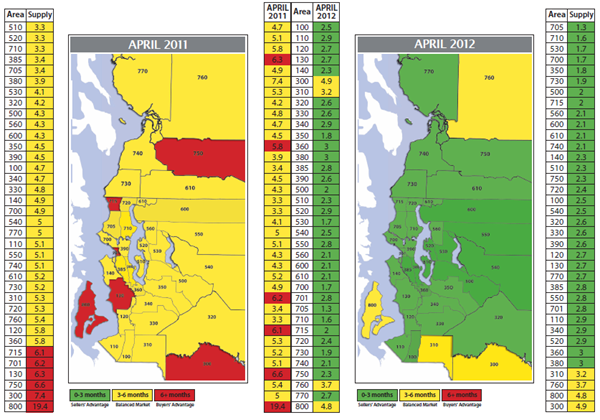 Prices of for-sale homes are on the rise in several metro areas. According to Realtor.com, which tracks 146 metro markets, the following areas have seen their median list prices increase the most from March to April:
Prices of for-sale homes are on the rise in several metro areas. According to Realtor.com, which tracks 146 metro markets, the following areas have seen their median list prices increase the most from March to April:
1. Minneapolis-St. Paul, Minn.-Wis.
Monthly median list price increase: 7.90 percent
Median list price: $199,500
2. Santa Barbara-Santa Maria-Lompoc, Calif.
Monthly median list price increase: 7.07 percent
Median list price: $545,000
3. Detroit
Monthly median list price increase: 4.66 percent
Median list price: $89,900
4. San Francisco
Monthly median list price increase: 4.62 percent
Median list price: $679,000
5. Seattle-Bellevue-Everett, Wash.
Monthly median list price increase: 4.46 percent
Median list price: $328,950
6. Boise City, Idaho
Monthly median list price increase: 4.40 percent
Median list price: $162,374
7. Trenton, N.J.
Monthly median list price increase: 4.26 percent
Median list price: $259,450
8. Boulder-Longmont, Colo.
Monthly median list price increase: 4.20 percent
Median list price: $375,000
9. Orange County, Calif.
Monthly median list price increase: 4.19 percent
Median list price: $448,000
10. Colorado Springs, Colo.
Monthly median list price increase: 4.09 percent
Median list price: $229,000
By Melissa Dittmann Tracey, REALTOR® Magazine Daily News






 A key component to the success of a short sale involves working with a Mortgage Originator who is well versed in the short sale process. The short sale negotiation process is a patience testing task. The complications are many, however if the buyer is securing mortgage financing and is working with an originator that understands that short sale process the buyer and seller can be rest assured, in most circumstances, that the transaction will get to the closing table.
A key component to the success of a short sale involves working with a Mortgage Originator who is well versed in the short sale process. The short sale negotiation process is a patience testing task. The complications are many, however if the buyer is securing mortgage financing and is working with an originator that understands that short sale process the buyer and seller can be rest assured, in most circumstances, that the transaction will get to the closing table.
